First race and first time solo sailing with the new boat! To be honest thou, it was not a real race, it was a challenge as the name of the event suggets. The purpose of Midsummer Solo challenge is to have a great time together with other solo enthusiasts with a strong focus on the social part (not this year for Covid-19 reasons), and we hope that all participants get to expand their comfort zone. To remove as much as possible of the competitive aspect we play by the following basic rules:
- Colregs are used, not racing rules
- Boats are divided into different classes based on hull length
- No handicap system (apart from hull length)
- No prize giving ceremony, just a finisher t-shirt & beer + bragging rights 😉
This year more than 100 boats had signed up, including boats from other countries such as Norway, Denmark, Germany, Poland, Netherlands… But then Covid-19 struck and the Swedish Sailing Federation made the decision that only boats from the local area are allowed to participate in any sailing events. In the end there was 59 starting boats.
The course
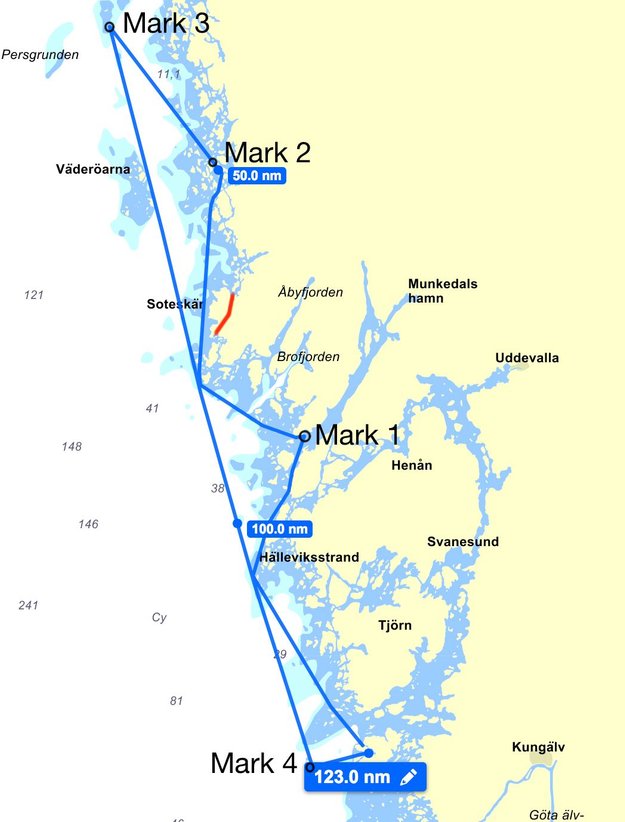
The course is 123 NM and has only 4 marks, all port roundings. It goes through the most beautiful parts of the Swedish archipelago during daytime and when the night comes you’ll be sailing on open water.
Check out this video from last years event to see how awesome it is, it is truly a must see:
Start to mark 1
Before the start I decided to play it safe. The forecast was reaching in 15-18 knots of wind with gusts hitting 30 knots. But I didn’t want to play it super safe, so I decided to start with full main and the big jib, but not with the Code0 although it would have been possible to use it according to the sailchart.
The start gun went off and I crossed the starting line about a minute later… Yeah, I really suck at starting, but it’s a long “race” and in the end it is highly unlikely that this minute will make any difference 🙂
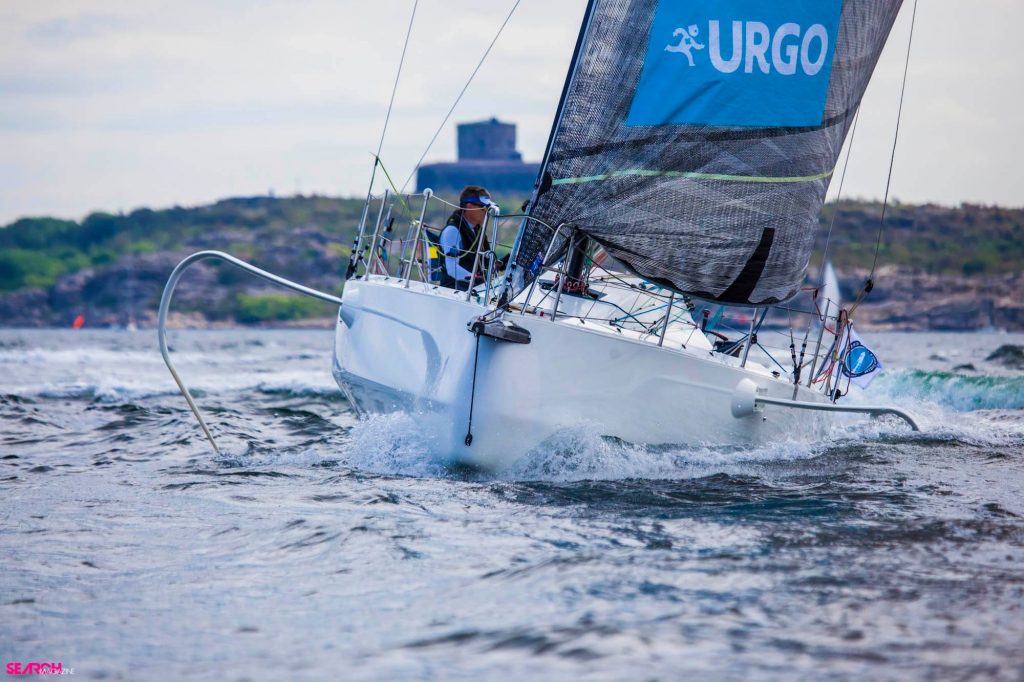


While crossing the Marstrand Fjord I realized that just using the jib felt a bit underpowered, but I didn’t dare to set the Code0 just yet since there would be a short passage with tight navigation at the other end of the Fjord.
Once past the tight navigation area I was leading the group and the Code0 went up. I tightened the halyard hard, then tightened the 2:1 tackline even harder… and then realized… oh fuck! I forget to tighten the backstay! What a rookie mistake 🙂 Coming from a Seascape 24 without any backstays I’m not used to that added bit of complexity and I’ll probably make the same mistake many more times before it becomes second nature in all manouvers and trimming.
With the Code0 up, and also the jib, the boat sped up. A gust with 25 knots from TWA 100-110 hit and the boat really took off. With a top speed of 16 knots it was absolutely amazing to feel the work of the foils! The nose was lifted slightly above the water, the boat felt ridicilously stable as if it literally was on rails, and everything felt so easy and smooth… There was no drama at all.

Approaching Gullholmen the wind angle became tighter and was now around TWA 70 so the Code0 had to be furled. Once past Gullhomen the wind shifted and it was full upwind all the way to Mark 1 but there was never a need to tack. Just before Mark 1 the gusts were hitting close to 30 knots but the boat was still fully manageable under the big jib and full main, still no drama.
Mark 1 to Mark 2

From Lysekil to Smögen I was running the Code0. The wind was shifting quite a lot, wind strenght was around 15 – 20 knots and the gusts was close to 30 knots. The TWA was anything from 95 to 135 degrees. A professional Figaro 3 sailor would probably have put up the A4 or A2 and wrestled it out, but since I’m an amateur and new to the boat I made the conservative choice of Code0. It was frustrating as hell when the TWA was around 135 degrees, but it felt damn good when the gusts hit and the TWA was around 95-105 degrees 🙂
The approach to Smögen gave me a bit of a headache. For some silly reason I took the easternly route of the two options below. In hindsight it was clearly a bad choice since it resulted in 1 000 meters of more or less dead downwind at the end before turning north again. Those 1 000 meters were not quick…

From Smögen to Fjällbacka it was tight reaching, steady winds of around 20 knots gusting 30. Just after Smögen i passed the leader of class Small, Jonas Dyberg in his J/88 whom had started 30 minutes prior to me and I could see the leader of class Mini (Jonny Petersson) whom had started 60 minutes earlier a bit ahead of me.
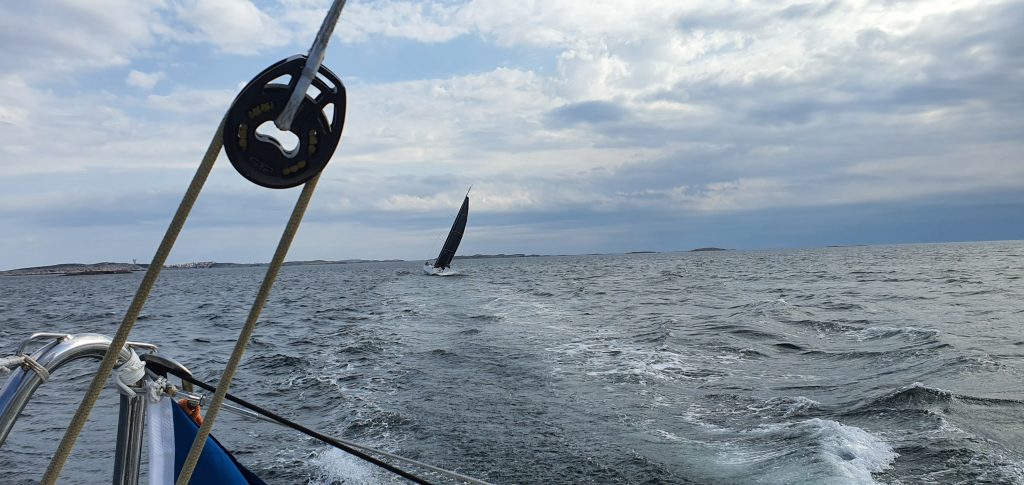

I got past Jonny well before Fjällbacka and was now the first of all boats regardless of class. It was time to decide how to approach Mark 2. The previous years I’ve taken the westerly option below but this year I wanted to play everything super-safe and opted for the easterly route. In theory it should be possible to go just east of Florön and that would have been the shortest route for sure plus the best wind angle, but one would have to be a madman to go through there, especially with a Figaro 3.

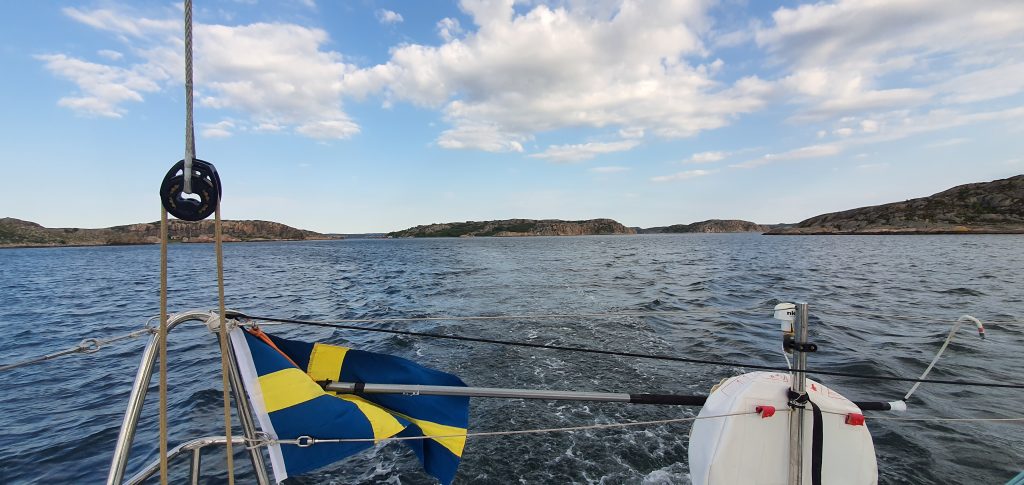

Mark 2 to Mark 3
Going from Mark 2 to Mark 3 was pure pleasure. The Code0 was out and I was cruising along at anywhere from 8 to 16 knots depending on the conditions. Check out the video below to get a good feeling of how easy and undramatic it is when a Figaro 3 is up to speed, helming with one hand and filming with my mobile with the other hand.
Mark 3 to Mark 4
This is a long leg, about 56 NM all in all. Unfortunately the wind angle was too tight for the Code 0, the TWA was anywhere from 65 to 90 degrees and the windspeed was anywhere from 11 to 22 knots with a few gusts of 30 knots. I was averaging around 8 knots of boatspeed and played around with the foils quite a bit but in the end I opted for 25% engagement.


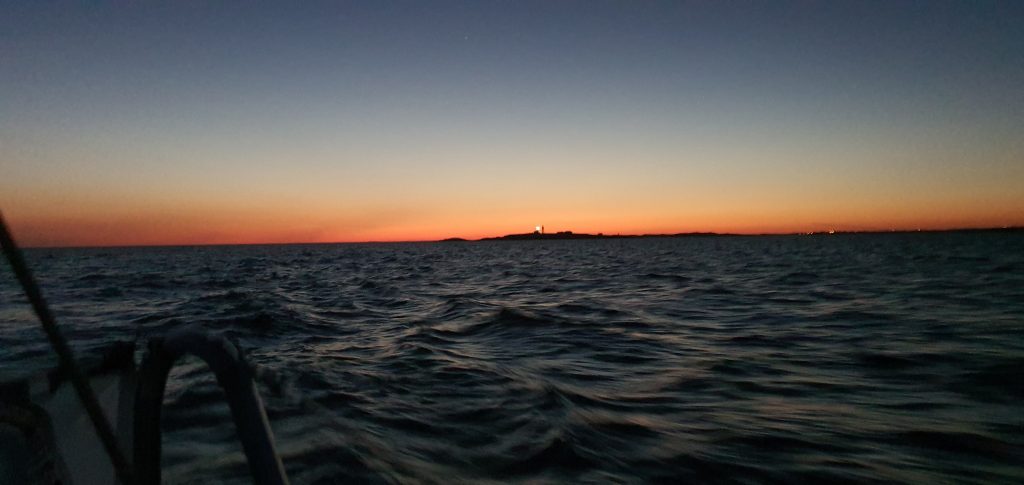
Once past Måseskär I noticed on the plotter that the RM1350 Embla, sailed by Anders Nyberg whom started 30 minutes after me, was just a few NM behind. As I lost the Line Honours the first year in my Seascape 24 just a few hundred meters before the finish line I was rather keen to try and grab it this year. So with Anders chasing me from behind I got more active on the trim and that really paid of, instead of doing 97% – 100% of polar target speed I was consistently above 100% of polar target speed. It should be mentioned though that it was very flat water and those polar target speeds are what the previous owner called his “routing polars”, i.e. the speeds he achieved overall when he was doing long races and including sail changes plus fuck ups. But anyway, as soon as I see that I’m above 100% I’m happy as a child on Christmas Eve, regardless of the fact that it is downtuned routing polars 😀

Mark 4 to Finish
As it was a northernly current I decided to stick to port tack to get maximum lift from the current, and it also played nicely with the wind shift at that time. Once out of the current it was time to tack anyway so it turned out to be the perfect timing.



No mistakes at the end and I managed to get Line Honours this year with a time of 15 hours, 24 minutes and 8 seconds, but Anders Nyberg in his RM1350 was 15 minutes and 21 seconds faster around the course.
I think it will take many years until we get faster conditions around the course 🙂
First impressions of the Figaro 3
I’ll write more extensively about this once I have more experience of the boat, but here are my first impressions:
- This boat is misunderstood by the general public. People think this is an extreme boat, but it is not. It for sure looks very extreme (and sexy if you ask me!), but the fundamental numbers such as SA/RM and SA/D are just a notch better than an ordinary offshore race boat and way lower than truly extreme boats such as FarEast 31R and ClubSwan 36. Read the full analysis here.
- People seem to think that foils make life complicated but that is not the case. Below 5 knots of boatspeed, don’t activate them. Above 10 knots of boatspeed, full activation. 5 – 10 knots of boatspeed, experiment. Just to be clear: they should always be fully extended, I’m talking about the rake.
- This boat is not any more complex to sail than any other offshore racer, it is probably simpler since everything on it is designed for solo sailing in mind.
- Believe it or not, but I would classify this boat as very comfortable! Sure, if you by comfortable mean a boat that has a proper head instead of a bucket, a proper kitchen instead of a jetboil, and a nice sofa instead of a bare interiour then you will not feel comfortable on a Figaro 3. But if you instead define comfortable as feeling safe on the sea, if you define comfortable by how the boat moves in waves, if you define comfortable by how effortless it is to manage all the lines in the cockpit, if you define comfortable as how easy it is to control the boat, then the Figaro 3 is a very comfortable boat. It is a matter of perspective and what you value most.
- Although the boat looks extreme this is a no-drama boat. Pretty much no matter what you are always in full control. Once boatspeed is above 12 knots it litterally feels like the whole boat is on rails 😀
Get all the latest updates by following Figaro 3, #24 – Sunkini on Facebook!

One thought on “Midsummer Solo Challenge 2020”